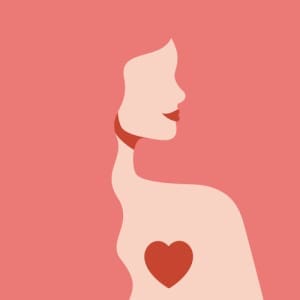Women’s Heart Health

Hey ladies, what is a heart’s favorite type of shoe? Pumps! Get it? Because hearts pump blood? It’s Betty here, and I love to put on a gorgeous pair of pumps to go out after a long day of superhero work. And while we’re on the topic of pumps, how is your heart pumping? According to the American Heart Association, heart disease is the number one killer of women. So, what is heart disease, and what can women do to maintain or improve their heart health?
What is heart disease?
Heart disease is a category of conditions affecting the heart and how it functions. The most common type is coronary artery disease. Women who suffer from this condition have arteries that are clogged with plaque buildup. This buildup makes it harder for their hearts to pump blood through their bodies.
What symptoms should I monitor?
Symptoms to watch out for may include:
- Chest pain or discomfort
- Chest pressure or tightness
- Pain in the neck, jaw, throat, upper abdomen or back
- Nausea or vomiting
- Palpitations
- Fatigue
What are some risk factors?
Busy women often look at a list of healthy habits to lower their risk of getting heart disease and say they don’t have time. But their lives may depend on it. So, what can women do to reduce heart disease?
- Exercise regularly
- If you smoke, quit
- Get enough sleep
- Manage your stress
We all know we should watch our weight, avoid smoking, and get enough sleep. (I can highly recommend superhero work for weight management, by the way!) These actions help with heart disease prevention, but stress is also a big factor. A recent study on women, work, and family by Kaiser Family Foundation, confirmed that family responsibilities still fall largely on the oldest woman in the household. Women who work often face work stress during the day and family stress at night. And unfortunately, that may be a big problem for their heart health. According to the American Heart Association, chronic stress may lead to high blood pressure, which, in turn, may increase the risk of heart attack and stroke.
Can employers help?
Employers can effectively help the women in their workforce manage stress to reduce heart disease. This usually involves looking at their benefits plans to ensure they include affordable access to health and wellness programs.
Employee Assistance Programs
By offering an employee wellness program, you may encourage female staff members to start a gym club, where they exercise their stress away. Or management could offer a discount program to local restaurants and grocery stores that serve healthy lunches and healthy ready-made meals they can take home to their families.
Stop Smoking Aids
Women who smoke to deal with stress may need help to quit smoking and could benefit from an FSA or HSA. Programs to stop smoking, nicotine gum and patches are all eligible for reimbursement from these tax-advantaged accounts. And if those stop-smoking aids don’t work for someone, copays and deductibles for behavioral therapy appointments are also eligible.
Financial Stress Relief
Employers can also help reduce stress by offering a Dependent Care Assistance Program to reduce payroll taxes on funds set aside to pay for daycare services. Other employees may see reduced stress from student loan payment support available with Student Loan Assistance Programs.
What’s the bottom line about women’s heart health?
Ladies, remember to take care of your heart health as you balance work and family responsibilities. Prioritize exercise, sleep, and stress management, and make time for self-care. You can do it all with balance and determination.
So put on those gorgeous pumps, own your work, love your beautiful families, and take care of your heart health, too!
Captain Contributor is an award-winning employee education and engagement program developed by DataPath, Inc. exclusively for use by our clients and their customers. To be notified when future blogs are published, please enter your email address above.
